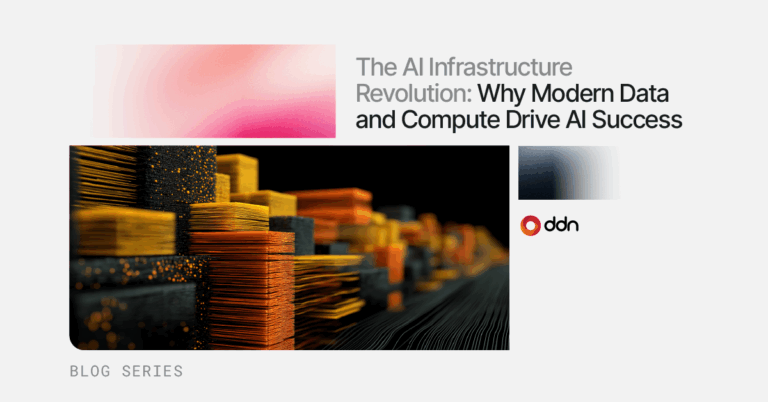Why AI Workloads Are Driving Demand for GPUaaS
As artificial intelligence (AI) continues to move from pilot to production, the infrastructure required to support it is evolving rapidly. From training massive, large language models (LLMs) to real-time inferencing in critical industries, AI workloads demand levels of compute performance and flexibility that traditional enterprise environments struggle to deliver.
GPU-as-a-Service (GPUaaS) is a cloud-based model offering on-demand access to high-performance GPUs optimized for AI, machine learning (ML), and data-intensive analytics. According to Gartner® “AI-optimized infrastructure as a service (IaaS) is emerging as a key growth segment within the cloud IaaS market. Gartner forecasts that the AI-optimized IaaS market will grow at a high compound annual growth rate (CAGR) of 83.1% from 2024 through 2028.1”
What Is GPU-as-a-Service (GPUaaS)
GPUaaS is a cloud delivery model that allows organizations to rent GPU resources rather than invest in expensive, on-premises hardware. This approach delivers:
- Elastic scalability to match compute needs as models grow
- Faster time-to-market for AI deployments
- Cost control through pay-as-you-go pricing
- Reduced IT overhead, especially for GPU-intensive applications
As AI use cases expand across sectors, from healthcare and finance to automotive, the need for specialized, high-performance compute becomes more urgent. GPUaaS platforms fill this gap by making innovative GPU resources available in minutes instead of months.
Hyperscalers vs. Non-Hyperscalers: A Shifting GPUaaS Landscape
Historically, hyperscale providers like AWS, Microsoft Azure, and Google Cloud dominated GPUaaS, thanks to their massive data centers and early investments in AI-optimized infrastructure. According to Gartner, “Hyperscalers have been leading the investment race for AI-optimized IaaS, with Gartner estimating that they bought the majority (56%) of AI-optimized servers in 2024. However, over the next few years, Gartner expects nonhyperscalers, which are referred to as ‘other xSPs’ in the above report, to grow their investments in AI-optimized servers at a higher rate (45%) than hyperscalers (30%). 1”
These challengers are carving out market share by focusing on:
- Faster deployment of new GPUs
- Purpose-built AI services
- Niche use case specialization
- Localized and sovereign AI infrastructure
Rather than trying to outscale the hyperscalers, they are out-specializing them.
Top Strategies Used by Leading GPUaaS Providers
According to Gartner,
Speed to Innovation
Providers is shortening their product launch cycles, often deploying the latest GPUs before hyperscalers can integrate them at scale.
Full-Stack AI Ecosystems
Rather than offering raw compute alone, leading providers are partnering with model vendors, MLOps tools, and AI frameworks to deliver end-to-end AI platforms.
Sovereign AI Participation
Engaging with national AI strategies and public-private partnerships is proving key to unlocking new customer segments and funding sources.
Edge Compute Enablement
Providers are investing in edge-compatible GPU stacks, including containerized AI workloads, support for real-time inferencing, and integration with telco and industrial networks.
Let’s explore two of these in more detail:
How Sovereign AI Is Powering Regional GPUaaS Growth
An increasingly important trend in AI infrastructure is sovereign AI, the concept that countries should own and operate their own AI compute and data platforms. This shift is being driven by concerns around national security, data privacy, and digital independence.
Gartner highlights that “ GPUaaS providers may be able to obtain government subsidies by promising to meet sovereign AI requirements, such as building a large AI supercomputer in a government’s country and providing infrastructure to domestic businesses on a priority basis. 1”
Examples of Sovereign AI Adoption
- SAKURA Internet (Japan): Offers sovereign GPU cloud services with government backing
- Orange Business (France): Partners with Mistral AI to offer GenAI services for European enterprises
- Yotta (India): Selected by the Indian government to deliver national AI infrastructure
This trend is creating a new class of AI infrastructure providers who are not only competitive, but strategic to national interests.
Edge AI and the Rise of Distributed GPUaaS Deployments
Another major evolution in the GPUaaS market is the rise of edge AI: the practice of running AI inference closer to where data is generated, rather than in centralized data centers.
Gartner highlights, ”GPUaaS portfolio beyond data centers to the edge by leveraging emerging technologies, such as AI-RAN, which integrates AI apps and 5G networks on the same computing platform, and by partnering with edge inference-focused vendors and developer communities.1”
What Enterprises Should Look for in a GPUaaS Provider
Choosing the right GPUaaS partner can directly impact the success of AI projects. Here are four key decision factors:
- Time to value: Does the provider support rapid provisioning of the latest GPU architectures?
- Operational simplicity: Is the platform easy to integrate with existing AI tools, or will it create friction in your data pipeline?
- Governance and compliance: Does the provider support data locality, sovereignty, or industry-specific regulatory needs?
- Platform maturity: Does the offering go beyond hardware to include orchestration, observability, and model management?
Gartner recommends to “support platform engineering as well as infrastructure management by integrating various AI engineering tools into container images or managed services to make them simple to deploy and operate, rather than supporting them individually.1” .
The Future of AI Infrastructure Is Powered by GPUaaS
AI adoption is no longer optional; it is a truly a strategic mandate. Organizations across industries are embedding AI into core workflows, from fraud detection and genomic sequencing to customer personalization and predictive maintenance.
As AI continues to scale, GPUaaS is becoming foundational infrastructure. It enables businesses to:
- Scale compute without massive capital expenditure
- Stay current with evolving GPU architectures
- Maintain agility in a highly competitive AI landscape
- Operate across cloud, edge, and sovereign environments
While hyperscalers will remain major players, the emergence of specialized, regional, and sovereign GPUaaS providers is creating new opportunities and greater flexibility for enterprises globally.
Where DDN Fits into the Picture
As AI workloads grow in complexity, the real competitive advantage lies not just in compute power, but in how intelligently data is organized, accessed, and mobilized. Platforms like DDN are designed to unify and accelerate the full data lifecycle, enabling enterprises to extract more value from their AI pipelines.
Adding a layer of data intelligence across GPUaaS deployments enables seamless integration across edge, core, and cloud environments. By supporting high-throughput, low-latency access to distributed, multi-modal datasets, and embedding metadata visibility, real-time orchestration, and AI-ready storage, DDN helps organizations eliminate pipeline bottlenecks, reduce time-to-insight, and operationalize AI at scale.
Customer Spotlight: Scaleway’s GPUaaS at Scale
A great example of this in action is Scaleway, a leading European cloud provider that turned to DDN to power its NVIDIA-based AI infrastructure. Facing rising demand for GPU-as-a-Service (GPUaaS), Scaleway needed a data platform that could match the speed and scalability of its compute offerings without compromising on efficiency or cost.
By deploying DDN Infinia, Scaleway gained a unified data intelligence layer capable of supporting ultra-low latency and high throughput across tens of thousands of GPUs. The result: massive increases in data pipeline efficiency, simplified storage operations, and improved economics for AI customers across Europe.
With DDN, Scaleway now offers one of the continent’s most performant AI development platforms, fueling everything from LLM training to production-scale inference in dynamic multi-tenant environments.
To explore how a data intelligence approach can strengthen your AI infrastructure strategy, visit DDN.com.
Source: 1. Gartner, Inc., Competitive Behaviors in the GPU-as-a-Service Market, Wataru Katsurashima, Naresh Singh, April 2025.ID G00825794
GARTNER is a registered trademark and service mark of Gartner, Inc. and/or its affiliates in the U.S. and internationally and is used herein with permission. All rights reserved.


